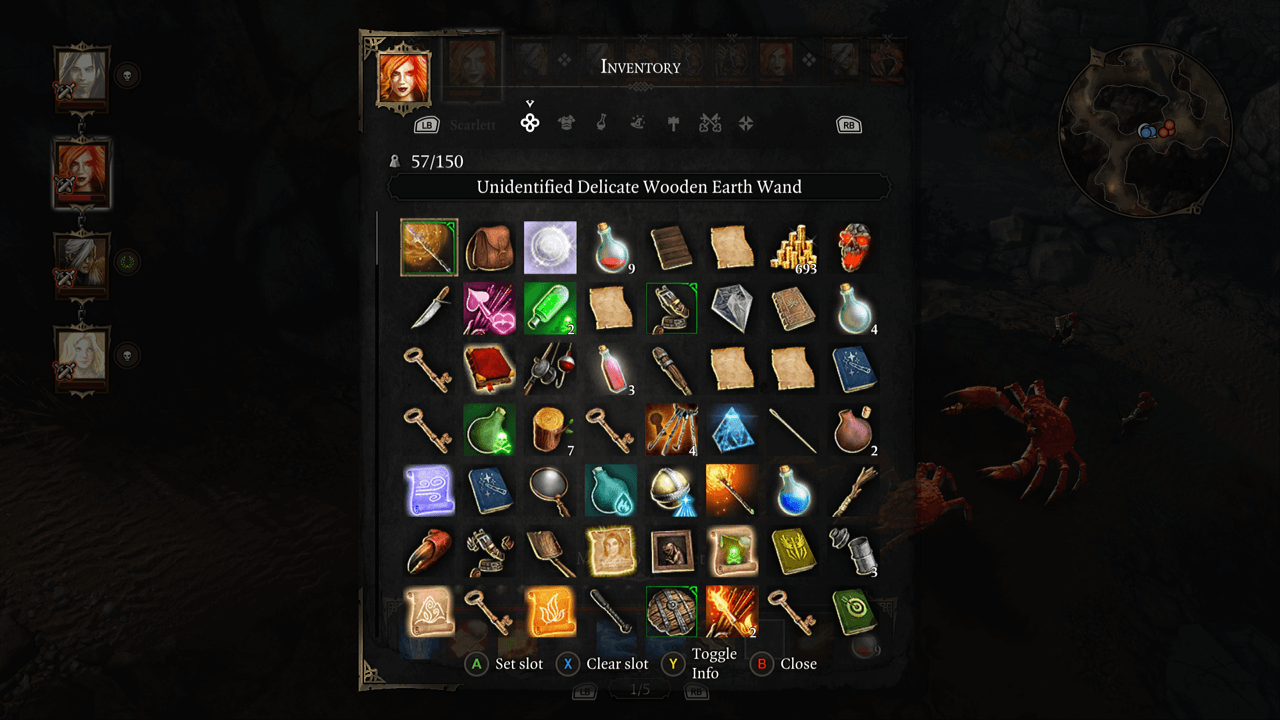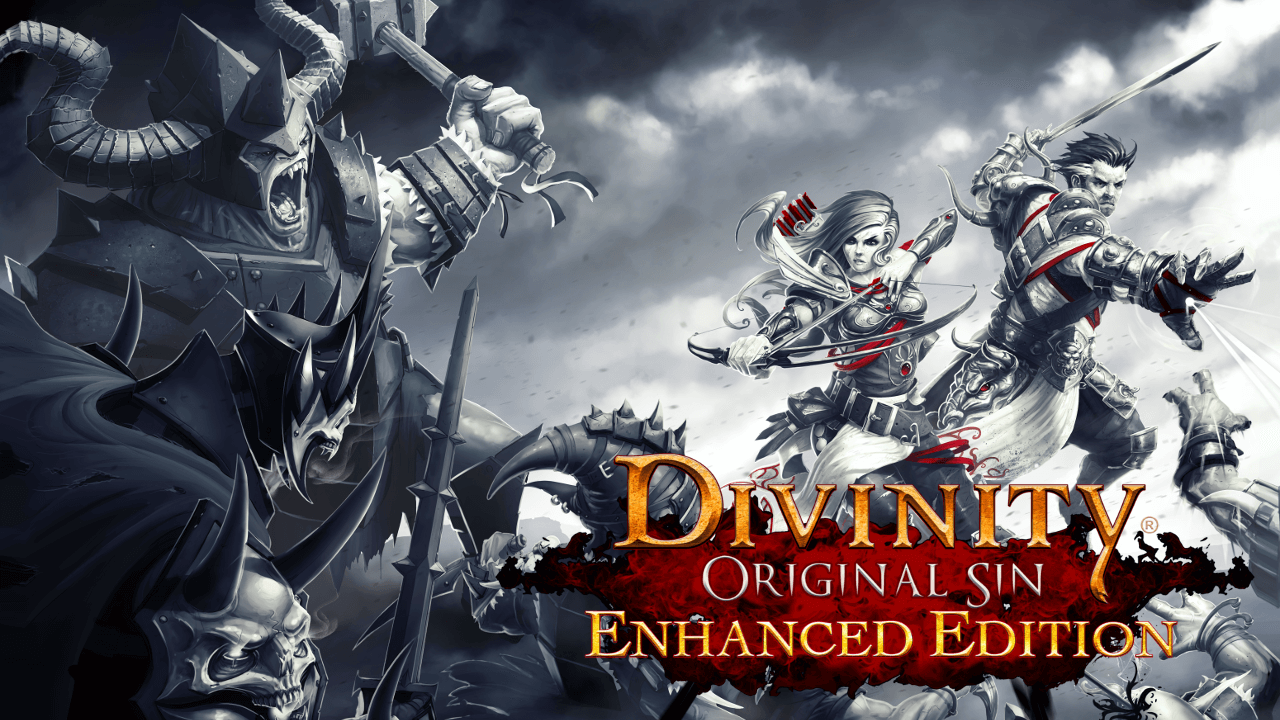Title: Divinity: Original Sin – Enhanced Edition
Version Tested:
Available On:
Developer: Larian Studios
Publisher: Focus Home Interactive
Genre: RPG
Official Site: Divinity: Original Sin – Enhanced Edition
Release Date: October 27, 2015
Where to Buy:
Larian Studios’ Divinity: Original Sin – Enhanced Edition marks the Divinity series’ arrival on consoles with a killer classic RPG experience.
Original sin, a prequel to the 2002 title Divine Divinity, first reached PCs at the end of June 2014. Enhanced Edition launched on
If you missed the first edition, Divinity: Original Sin – Enhanced Edition allows players to customize two protagonists “Source Hunters” before setting them loose in the world of Rivellon, where they are sworn to seek out and eradicate malicious “Sourcery” (eh?) wherever it exists. Things get complicated when the Hunters discover mysterious stones that react strangely to their presence. This, in turn, attracts the interest of extra-dimensional beings who seek to protect the universe from a dark force that would devour it. The Source Hunters must seek answers to restore peace to Rivellon, defend space and time from dark magic, and uncover the secrets of their own existence.
[embedyt] https://www.youtube.com/watch?v=PhokvW3SyXQ[/embedyt]
[gap height=”15″]
Original Sin’s gameplay includes character creation, party management, world exploration, social interaction, and turn-based combat in a variety of highly interactive settings. Playable characters develop in a “classless” stat system, featuring a variety of starting character templates players can choose to use, modify, or ignore completely while customizing their team. Careful character creation is essential, as the game has a way of punishing the unprepared. Leveling is infrequent, especially during the first hours of the game, and the acquisition of new talents and traits will be slow. Wise players will design characters whose skills fit well together if they hope to rise to the occasion.
Diligent party development yields teams that can craft and repair equipment, pick locks, purchase at better prices, and even talk to animals throughout the world. Few things speak to Original Sin’s surprising depth like the moment you discover that every cat, rat, chicken, and dog has something unique to discuss with you if you possess the right talent (and the voice-over for all of these is outstanding). Some of them even play special roles in quests.

Many of the joys of Original Sin’s gameplay are found in exploration. Everything that looks like a container holds potential for loot. Each structure can be searched for secrets. Just about anything can be moved, stolen, and sold. This method of revenue generation can be an important ally in your fight against the game’s occasional difficulty. Great gear and all the resurrection scrolls you can find will help you gain much-needed XP to start confidently defending yourself. Strategic placement of waypoints and other clever travel devices will allow you to relocate at a moment’s notice. This will help when you frequently find yourself in trouble or far from where you need to be.
The map system is easy to use and features custom markers, letting players enter text information to be displayed on the map. You can track a custom marker but, sadly, you’ll only see it on the mini-map if you’re close enough. You won’t get the benefit of an arrow pointing to a custom marker off-screen.

Original Sin’s turn-based combat system is outstanding. Combatants are not constrained to a grid but can still make heavy use of the environment including cover, objects, and weather. The wide variety of character abilities and equipment leaves nearly limitless ways for a battle to play out and even routine random encounters can become strategic slugfests. The camera doesn’t always follow quite everything it should, leaving some attacks to take place off-screen, but overall I was able to follow the action with ease.
If the combat system has any sticking point at all, it’s likely the controller-driven cursor used for selecting targets for attacks and spells. Not only did I have a little trouble highlighting my targets, I actually lost a party member completely at one point because she fell during battle and a large orc collapsed on top of her, hiding her body. Try as I did, I was never able to target her for resurrection, even after the battle ended.

Enhanced Edition’s graphics and animations are greatly improved from those in the first edition. The art style is well-suited to the game’s content and sense of humor and handles the tricky isometric/top-down views with little trouble. The game’s UI design makes perfect sense and the special effects feel just right. Perhaps the game’s only graphical issues appear when events occur simultaneously and things start to pile up awkwardly. Title banners often overlap dialog menus before disappearing, with both items covering up character subtitles behind the menu. These issues are minor and didn’t keep me from following along as events unfolded.
Sound design was one of my favorite aspects of the game. Though the menu’s opening synth violin gave me pause, I was humming Cysealean melodies between play sessions in no time. Voice-over for every character’s lines throughout the game is another big win for Enhanced Edition and makes Rivellon come to life. The lead characters were recorded in several voices each, all of which are worthy of your time.

Crafting in the game works very well, but I found inventory management to be trying at times due to the game’s keeping with classic party management conventions. Each player’s items are their own. Equipment can be passed back and forth easily enough, but the minutes spent moving gear around start to add up, particularly when using the console control scheme. Merciful touches like allowing easy use of another character’s ability to identify or repair an item seem to indicate that the development team was aware of issues here, but I think they could have gone even further in offering ease-of-use concessions for players without a mouse and keyboard. For example, secondary party members who approach a merchant directly may be ridiculed and face a bartering penalty because the leader didn’t speak to them directly. This means the secondary character needs to transfer all sale items to the party leader for trade on their behalf. This seems a little harsh on players who are just trying to get back to the adventure.
It’s worth mentioning here that some of Original Sin’s design choices are pre-made by its co-op support. A player rightly can’t sell a valuable item that might belong to another human player. Decision-making, similarly, has room to be influenced by a second player. This is interesting from the outset as players are asked to adjust AI settings for the second main character when no human second player is present. You can choose no AI, wherein you will make decisions for the entire team, or you can choose a personality appropriate (or deliberately inappropriate) to the character you have customized. The latter option proved to haunt me when I tried to add a character to my party later in the game and my partner vetoed the move before beating me in a game of Rock, Paper, Scissors to determine the outcome. I was impressed that such a thing could take place and, simultaneously, ready to kill my partner before forging ahead.

New players may also find some NPC interactions turning south unexpectedly with dramatic results. Before I reached the game’s very first town I’d reluctantly battled a pair of guards on a bridge after what I thought would be fairly simple intimidation. By the dialog system’s rules, the intimidation was a failure. They immediately attacked, requiring me to kill them to proceed. I’m sure this intimidated them plenty.
The presentation of Divinity: Original Sin – Enhanced Edition is excellent; it does what it set out to do with style. Larian Studios has constructed a living, breathing world where nearly anything is possible and almost everything is worth the attempt. My very few complaints about the game involve ease of playability using a controller, feast-or-famine combat, and a somewhat nagging sense that I often needed to exploit something to advance rather than simply playing smart.
Overall, Original Sin has made a big fan out of me. I fear that Enhanced Edition may be under-appreciated on consoles, but its target audience will find an experience with serious staying power.
- Gameplay: Character creation, exploration, and combat are all a blast. Balance and pacing can be painful.
- Graphics: The game looks great, big improvements over the first edition. UI clutter is a minor, occasional issue.
- Sound: Music and voices are awesome throughout, even when used for humor.
- Presentation: The game does its job very well. The game’s difficulty can be somewhat distracting.
[review]







